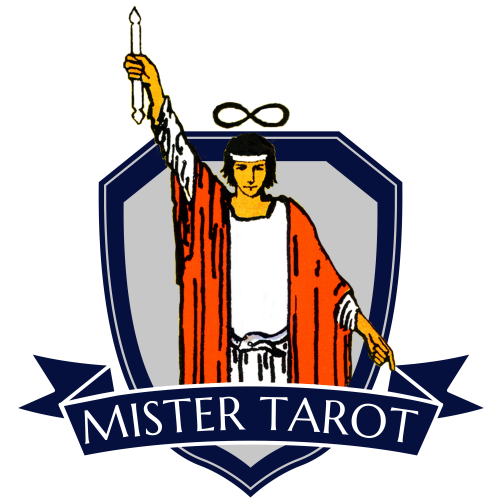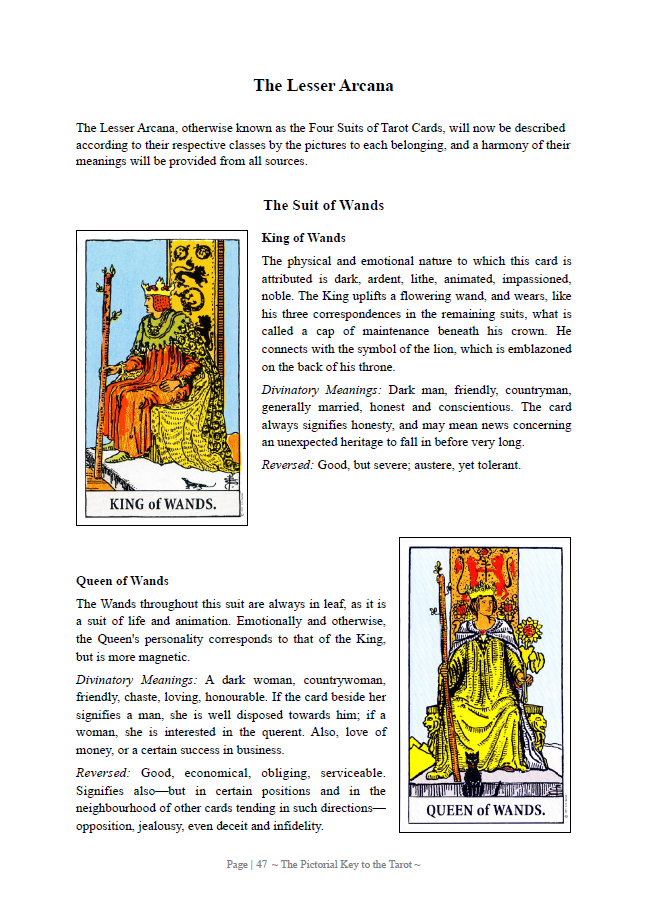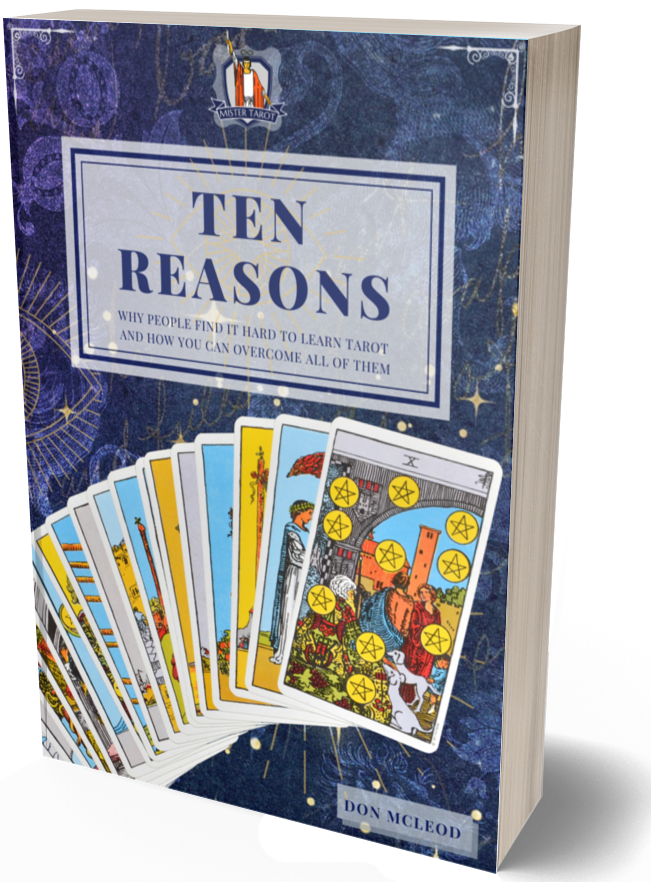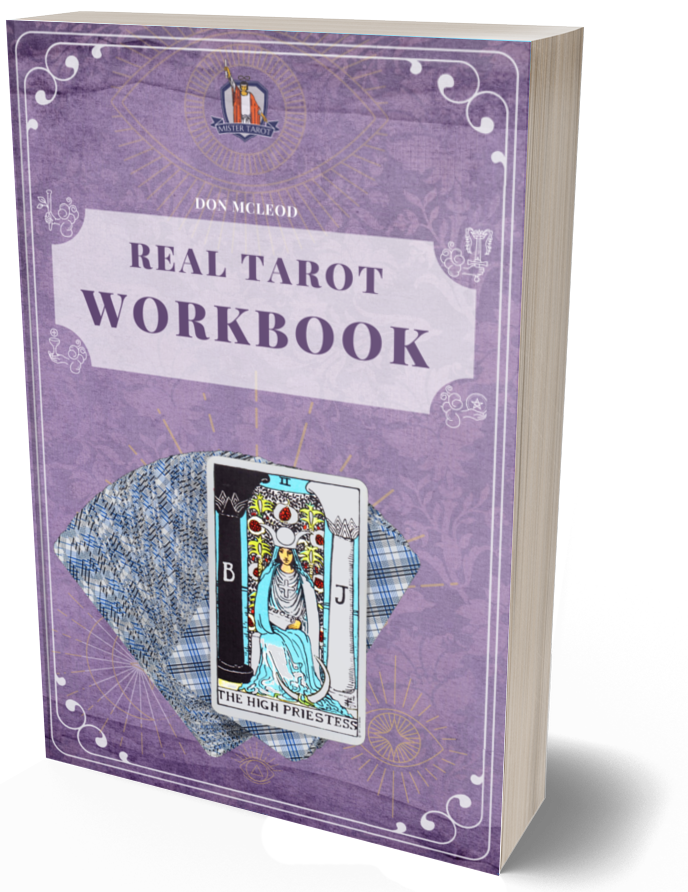The Pictorial Key to the Tarot
NOW WITH COLOR IMAGES OF THE CARDS!
“I have given prominence to one method of working that has not been published previously; having the merit of simplicity, while it is also of universal application, it may be held to replace the cumbrous and involved systems of the larger handbooks.” A. E. Waite
or
$6.99 USD for a limited time only
*By purchasing you agree to the Terms & Conditions
OVERview
3 Parts
100 Pages
First published in 1910, ‘The Pictorial Key to the Tarot’ is the original instruction book for the modern Tarot. It was written by A. E. Waite, the designer of the Rider-Waite deck.
Despite the archaic writing style, and the pomposity of the author who was obviously attempting to impress the reader with his knowledge of the occult, this book is extremely valuable for understanding the placement of symbols and imagery within the cards.
Is the person in the 9 of Swords card a man or a woman? Why do the Wands have green shoots sprouting from them? Is the angel of Temperance a male, female, or neither? Waite can give you the answers, because he designed the cards with certain descriptions in mind. He’s the undisputed authority of this deck!
Some of the secrets from Waite’s Masonic and magical organisations were not allowed to be made known to the uninitiated, so Waite was deliberately vague about the meanings of some symbols, but many obscure and often overlooked images are brought to the reader’s attention through this book.
This book is not for the beginner, but it’s a necessity for the experienced Tarot reader who wants to know the esoteric aspects of the cards, as envisioned by Arthur Edward Waite.
Preview
SUMMARY
The value of intuitive and clairvoyant faculties is of course assumed in divination. Where these are naturally present or have been developed by the Diviner, the fortuitous arrangement of cards forms a link between his mind and the atmosphere of the subject of divination, and then the rest is simple.
Where intuition fails or is absent, concentration, intellectual observation and deduction must be used to the fullest extent to obtain a satisfactory result. But intuition, even if apparently dormant, may be cultivated by practice in these divinatory processes.
If in doubt as to the exact meaning of a card in a particular connection, the Diviner is recommended, by those who are versed in the matter, to place his hand on it, try to refrain from thinking of what it ought to be, and note the impressions that arise in his mind.
At the beginning, this will probably resolve itself into mere guessing and may prove incorrect, but it becomes possible with practice to distinguish between a guess of the conscious mind and an impression arising from the mind which is subconscious.
Sample Pages
Get it Now!
“The Tarot embodies symbolical presentations of universal ideas, behind which lie all the implicits of the human mind, and it is in this sense that they contain secret doctrine…” A. E. Waite








